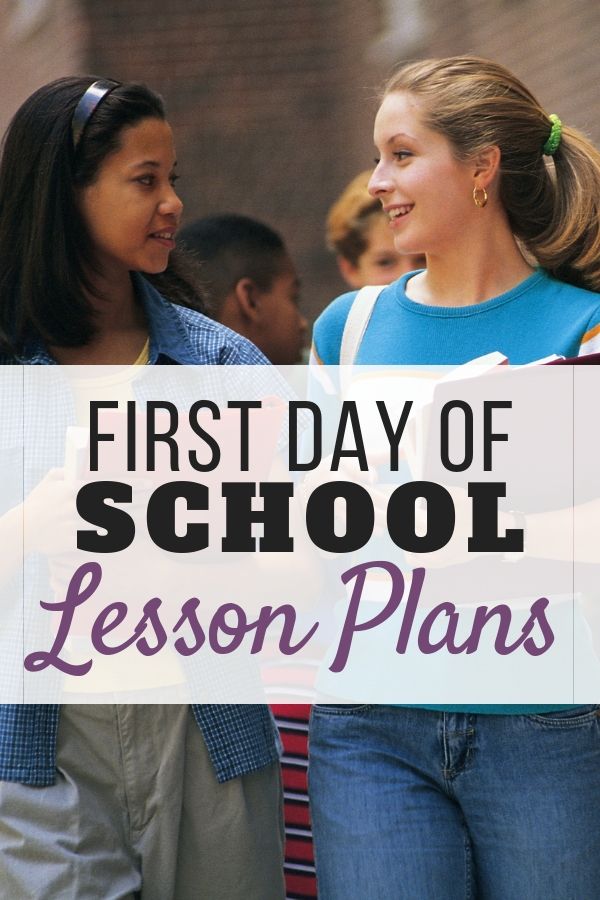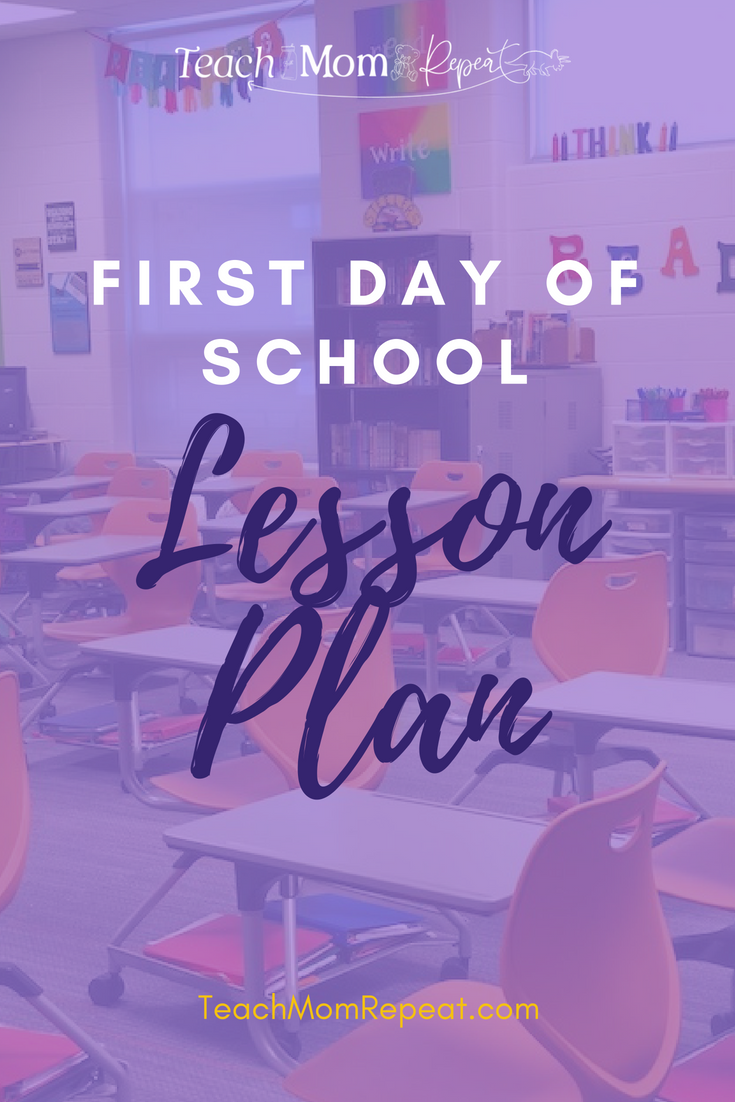Teachers have been preparing for their year most of the summer and the excitement builds to crescendo the day students walk through our doors. The last lesson plan we really want to follow is to stand at the front of the room and go through a massive list of rules. Some teachers will choose to do this. You can be different and set a tone of learning on the first day with this lesson plan.
Often times the first day of school will not follow your regular time schedule. This makes for difficult lesson planning to figure out what you can fit into the usually short time you have with these new students. Take advantage of this unusual timetable and let it work to your benefit. Even if you run a normal schedule this plan will be one that students will enjoy. You will also learn a lot about your new kiddos!
Set a tone of learning
Show them your books. There will be plenty of time to go over how to turn in papers and where to return supplies and the consequences for bad choices. Let your students know that on day one your priority is their learning. Sharing your books and the passion you have for them will make a strong first impression.
Consider how much information these kids are taking in on the first day. Nearly every teacher is going over some part of the handbook or handing out their list of rules and expectations. I used to be that teacher. I would write them a letter that talked all about my expectations for being a student in my classroom. We would read it out loud together and it would serve as a model letter which they would replicate for homework that week. Now multiply this by the number of teachers an average middle schooler or high schooler sees in a day. That’s a lot of information to take in within a seven-hour day.
Get them talking
The first day of school marks a change in the social scene hub. Wherever the crowds were gathering over the summer this all changes on the first day of school. Kids are excited to see which friends are in their classes and where their locker is located and who they will sit with at lunch. The kids are much more focused on their social scene day one then they are about the expectations teachers are explaining to them. So why not let them be social? As long as they are talking about books, let them talk.
Listening in on these conversations will provide you with valuable information. Pay attention to who resists and who dives in with both feet. Your resistors are now on your radar! Those who dive in and start talking about the books in the stacks they’ve already read will be your marketing committee. Use them to share book talks and favorite reads for those who aren’t so excited about reading. Find more ideas about the readers you’ll be meeting in your middle school classroom in this guest post I wrote for the Booksource Banter blog.
How to share your books
This is an activity that I call Speedbooking. It’s similar to the concept of Speed Dating. To prepare for this activity you’ll want to place seats in a circle or have a fixed pattern for books to travel. At each student seat place a stack of 4-5 books. Choose a good cross-section of your library. Be sure the stacks are a mix of books. Pull some of your most popular, “fly off the shelf” titles. Don’t forget about the books in a series. Research shows that students are more likely to continue through a series. So including these books will be good for your reluctant readers.
When students arrive in the classroom tell them that they’ll have time to look at the books, but not yet. Start with a conversation about how to choose a book. Ask them to give you all the ways they make an informed decision about choosing a book to start reading. Some of the most common answers might include reading the back of the book (great place to teach the word synopsis vs. summary), read the first few pages, looking at the cover. Another good teachable moment to mention that judging a book by its cover is ok when it’s an actual book. A few answers that don’t often come up but are worth mentioning are to choose a favorite or trusted author, read in the middle to look for words that might be too hard, look for key aspects that identify the genre. Keep this talk to 10 minutes and it helps to make a list on the board or in an anchor chart.
Now they are ready to start looking through the books. In order to keep track of the books they like try my record sheets. One is a running record and the other is meant to replicate Instagram. This can be used for your visual students. Often the struggling readers have a hard time finding books they like or that on their reading level. They might feel pressure to write titles down because those around them have several on their list. Giving them the option to draw and use the Instagram template gives them something to keep their hands and minds busy if the stack isn’t for them.
Each round takes about 90 seconds. It helps to set a timer. The kids will catch on to the process which allows you to listen in on conversations happening or strike one up about a book you might recommend. Ideally, you’ll have time to allow all the stacks to make it around the circle.
Update: Speedbooking during the pandemic
So much of what we always do is now not possible. It makes me sad that I’m not able to allow my new group of students to touch books and flip through them on the first day of school. I also don’t want to give up this moment to highlight the importance of reading and start by offering my students their choice of a book to read. Thankfully some other very creative teachers started designing Bitmoji classrooms and reading rooms.
This idea inspired me to create a virtual option for students to choose their books. I chose my stacks of books like I normally would and found images of each of the book covers. These were randomly placed on the bookshelves then linked to their Amazon page. This will allows students to read the synopsis, as well as, reviews for each book. They will still keep a future reading list while exploring the different titles.
The next day students will choose and check out the book they would like to read. I have been given permission to allow book check out as long as collected books are wiped down and sit for 72 hours before returning to the shelves.
Although your shelves and mine may not be the same feel free to use my slides as templates to create this activity for your students.
Speedbooking Virtual Bookshelves
Follow up lesson plans & ideas
After all your classes have been through the stacks and have created a Future Reading List be sure the lists are placed where they can be referenced often. Most likely your schedule will only allow for this activity to take place. The following day is a great opportunity to show students your book check out system. If you currently do not have one or are looking for a free system that is digitally tracked read my post about using Classroom Organizer. If your library needs some “beefing up” check out this post about reading recommendations for middle and high school.
Share your first day of school routines that have helped you get to know students right away while setting the tone for learning. I’d also love to hear from anyone who tries this plan!







